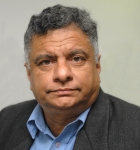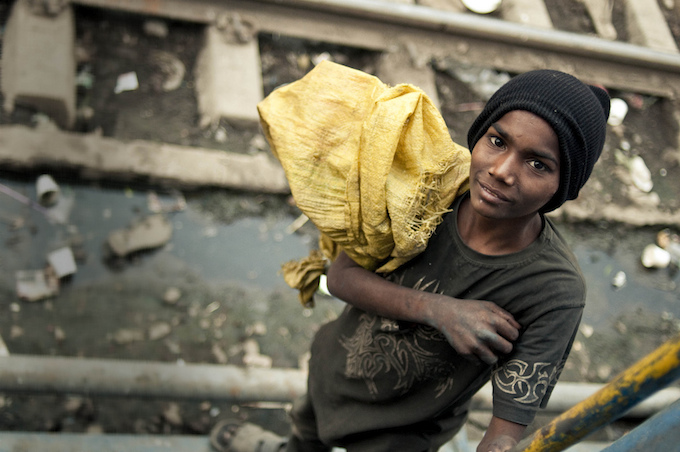The problem
Regardless of which political formations emerge from the 2014 general election in India, and of who ultimately becomes the prime minister, the first task before the next government will be to revive the economy which, in the past three years, has slowed down in a measure that no one would have thought possible even 12 months ago.
GDP growth is down from 9.3 per cent in 2010 to around 4.5 per cent now. This has meant that almost 10 million jobs have either been lost or not created.
The savings rate, which by definition equals the investment rate, has come down to less than 30 per cent after having touched 37 percent in 2007. Lower investment means lower growth.
Industrial growth is positive only because the numbers are dodgy. Otherwise, it has all but collapsed and reviving it is not going to be easy.
Consumer price inflation, led by food inflation because the poor have started eating better now, stayed steady at over 10 per cent for five years. But it has now begun to come down because of the growth-squeezing monetary policy, though not by much. This has shaken public confidence in financial instruments.
It is clear that the next government will be coping with a major fiscal crisis whose effects will last at least three years or perhaps even five years.
The fiscal deficit has been pruned to less than five per cent but only by postponing large volumes payments to the next fiscal year, no one really knows how much. When these payments are made next year, the deficit will go right back to where it was a year ago – over 6.5 per cent of GDP if not more.
Add to all this the debts of the state governments -- which could push up the national debt to close to 10 per cent of GDP -- it is clear that the next government will be coping with a major fiscal crisis whose effects will last at least three years or perhaps even five years.
The current account deficit which had threatened to worsen steadily throughout 2012 and 2013 has been reduced to less than 2 per cent of GDP but only by a savage squeeze on gold imports and massive borrowings from abroad in one form or another.
The more expensive as well as volatile rupee, which depreciated over 35 cent in three years, has also played a role. For a while this helped export growth, which after increasing steadily, has now reached a plateau.
The banking sector is in very deep crisis with mammoth unpaid loans made to industry during the boom years. Most of these loans came from public sector banks which now require huge injections of funds over the next three years, perhaps as much as $10 billion. No one knows where this money is to come from.
The solution
How will this affect the way the next government approaches the economy? Many are advocating big bang reforms but that is mostly futile because those have mostly already been tried. A few politically difficult ones remain but without a huge majority in Parliament no government can hope to do them.
And this is where the so-called Modi Model can become important because it is not an economic model but purely an administrative one. It makes the civil services accountable and makes the civil servants work. The failure to do so was one of the United Progressive Alliance's chief failures. It diminished accountability to the point of non-existence.
Modi is essentially a manager and his solutions comprise chiefly of identifying the small problems that hold up big things and getting the machinery of government to work to solve them. This is what Modi has done in Gujarat – wrangled better management of the state’s employees.
To give just one seemingly trivial example, soon after he became chief minister Modi was told that milk production declined in the summer because cattle become more vulnerable to disease. He responded by ordering, on the pain of severe disciplinary action, his veterinary department to go out in April and make sure that all the cattle – each and every one -- was properly inoculated. Then her personally monitored the progress on a weekly basis.
Banal as it may seem this is what is called good governance -- making sure that everyone in government does his or her job. In a country where there is a deplorable lack of the work ethic, the importance of this cannot be emphasised enough – which is what Modi does.
The hurdles
Administrative solutions, while perhaps doing a quarter of the job, will clearly need to be supplemented by policy. The focus for the next three years will have to be on raising investment to a level that can sustain a GDP growth rate of 8 to 9 per cent.
There are three major hurdles to be crossed in the next five years: the shortage of land for industry and the difficulties in acquiring it after the UPA made it so with its land acquisition law, the effect of which has been to make property impossibly expensive; the shortage of electricity after the Supreme Court made mining hard, thus reducing the supply of coal to power stations requiring imports even though India has an abundance of coal; and the shortage of water for everyone because the states won’t allow Indian rivers to be linked for political reasons.
No government is going to find these problems easy to solve because they require either changes in the law or the cooperation of the states which will not be easily forthcoming.
In short, the next government, with or without Modi, is up the proverbial creek with no paddle in its hands.



